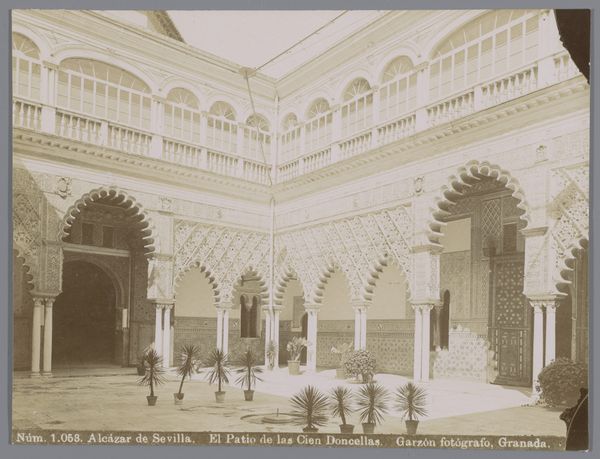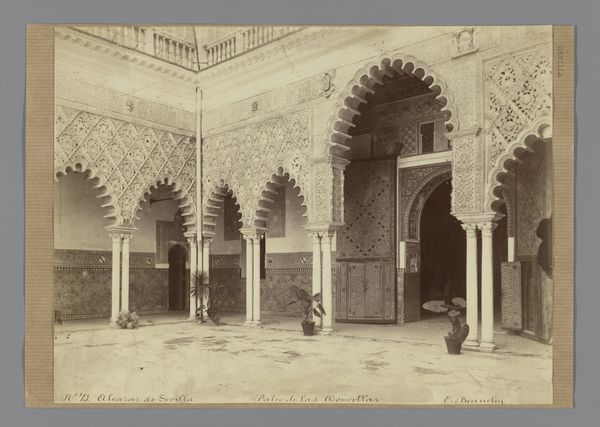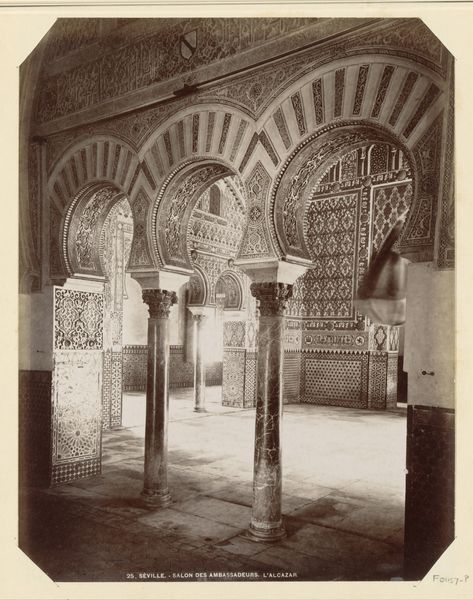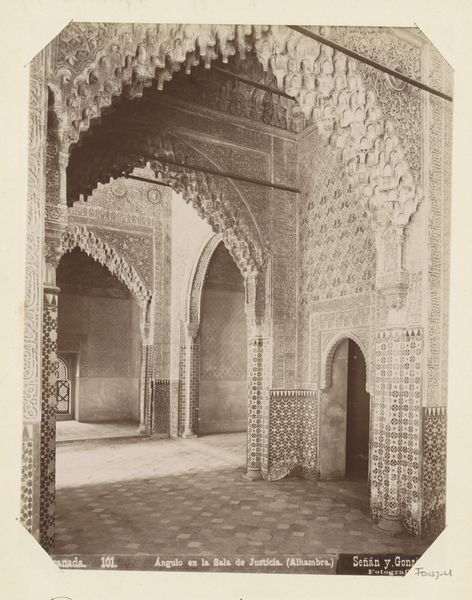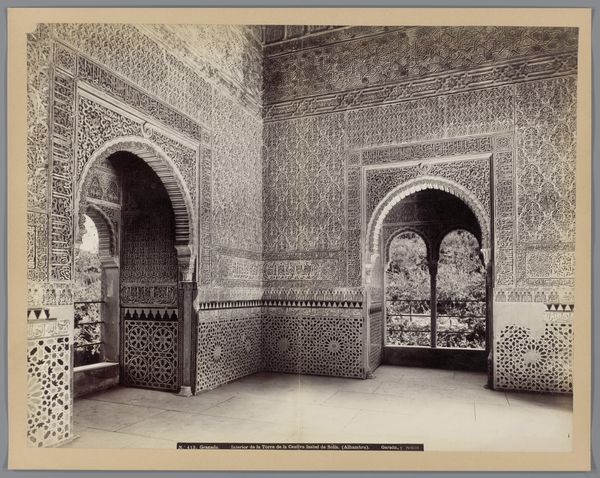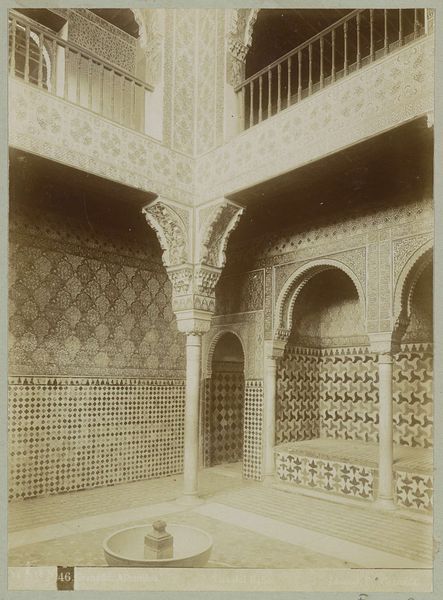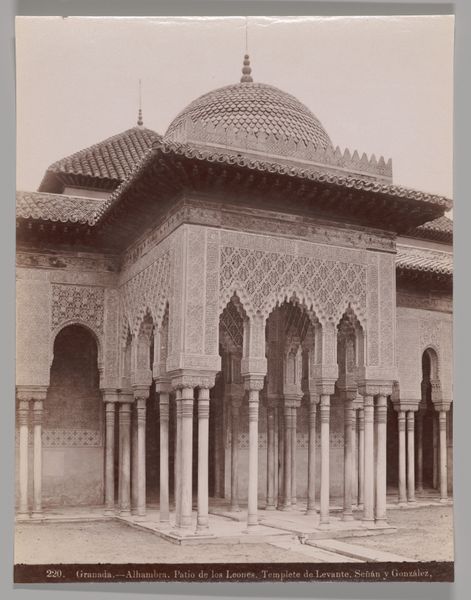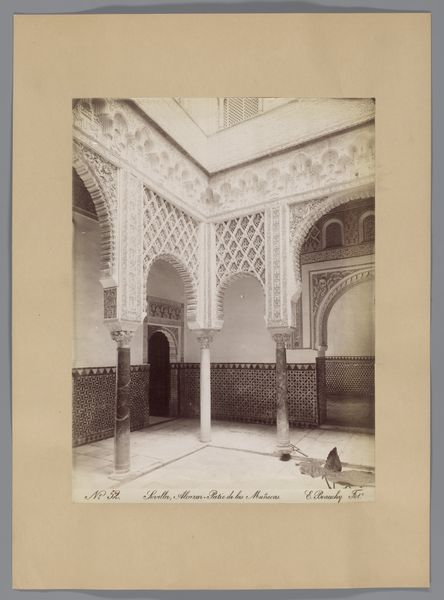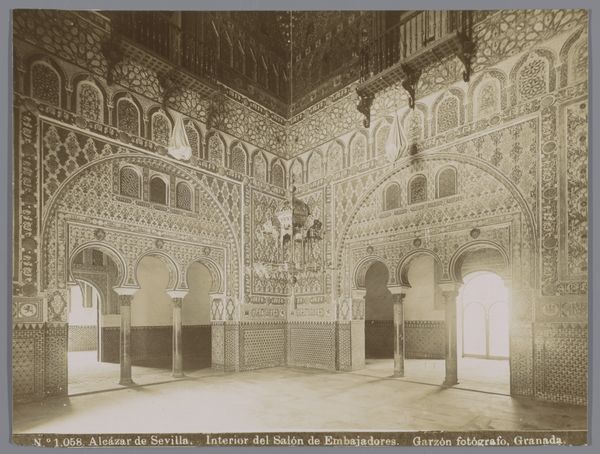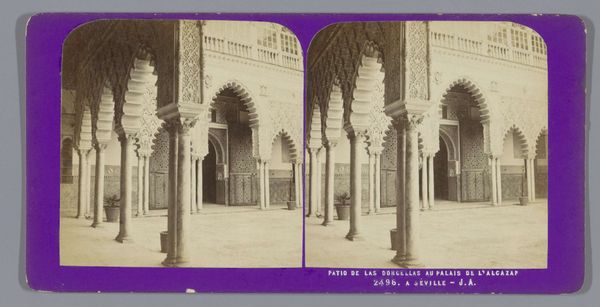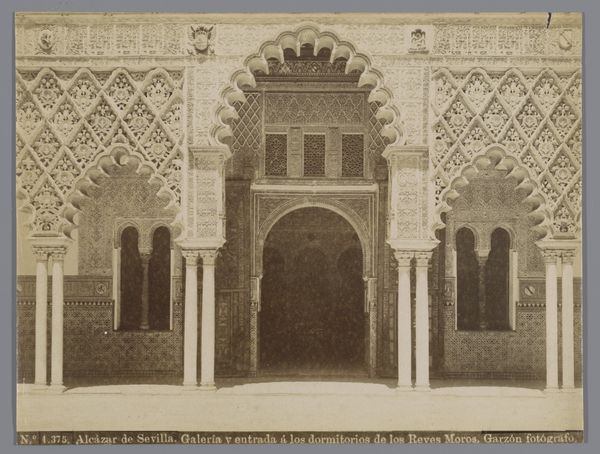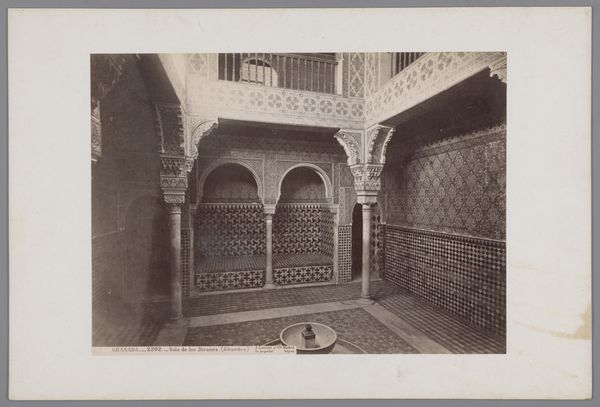
photography, architecture
#
photography
#
19th century
#
cityscape
#
islamic-art
#
architecture
Dimensions: height 169 mm, width 228 mm
Copyright: Rijks Museum: Open Domain
Editor: This photograph, "Binnenplaats van het koninklijk paleis van Sevilla," taken sometime between 1880 and 1905 by Emilio Beauchy, is incredibly detailed. The architecture just explodes with intricate patterns. What stands out to you about this piece? Curator: As a materialist, my eye immediately goes to the construction, the labor embedded in this architectural photography. Think about the crafting of those Moorish arches. It's not just about aesthetic beauty; it's about the workers, the stone, the processes of extraction and placement. Editor: I hadn't considered the workers who created the space originally. What about the photographer, Beauchy, what role did the technology play? Curator: Exactly. The photographic process itself is key. It involves materials like the glass plates and the developing chemicals. Consider how photography democratized images of architecture; enabling the circulation of designs and labor across different social strata. Editor: So, the act of photographing makes it more accessible and gives it new life? Curator: Yes! And it's crucial to analyze how this particular image, presented and consumed in the late 19th century, shapes perceptions. Is it pure documentation? Or is it promoting a specific ideal of Spanish identity connected to its Moorish past, maybe feeding colonial desires through exoticized visuals? Editor: That’s really fascinating. So it's not just a photo; it's part of a bigger social and economic story. Curator: Precisely. It's a layered history revealed through material and process. What appears to be just architecture is really a network of relationships. Editor: This definitely changes my perspective; thinking about art this way makes you consider the wider implications, thanks! Curator: Indeed, it pushes us to look beyond the surface and consider art and architecture as products of tangible efforts and societal forces.
Comments
No comments
Be the first to comment and join the conversation on the ultimate creative platform.
